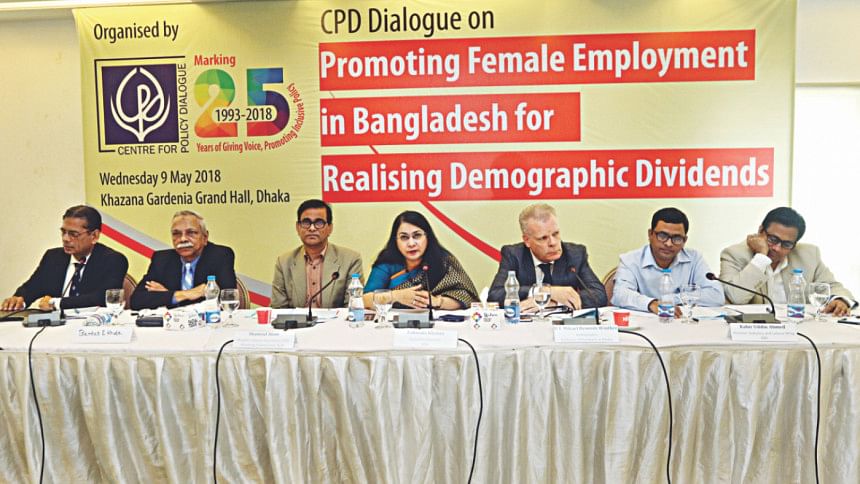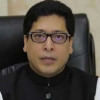Disquieting trend in job market

Some 8.5 lakh women lost jobs in the industrial sector between 2013 and 2016-17 -- a development that the Centre for Policy Dialogue has termed 'truly disquieting'.
It appears that many jobs were displaced for adoption of technology by factories after the increase in minimum wages for garment workers, said CPD Distinguished Fellow Mustafizur Rahman at a dialogue yesterday.
Besides, a large number of workers became jobless owing to the closure of sub-contracting factories after the Rana Plaza collapse, he said, citing that the number of employed female in the industry fell to 3.15 million in 2016-17 from 3.99 in 2013.
“The major challenge is to ensure jobs for them,” said Rahman at the discussion organised by the CPD on promotion of female employment to realise the demographic dividends enjoyed by Bangladesh now, held at the Khazana Gardenia Grand Hall.
After analysing the latest Labour Force Survey of the Bangladesh Bureau of Statistics, the independent think-tank said one-third of the working age population above 15 years of age are not in employment, education or training (NEET) And 57 percent of them are women, the CPD said. The figures come at a time when Bangladesh is entering its demographic dividend phase for rising share of working age population out of its total population. Yet, the participation of women in the labour force has not been rising: since 2010 it has been hovering around 36 percent, according to data from the BBS.
Bangladesh's working age population between 15 to 59 years of age will increase significantly by 2061 and the availability of a large number of young, healthy and educated workers must be seen as a significant advantage for the country.
“Female employment will play an important role in realising the potential benefits accruing from this demographic dividend.”
Labour force participation by women must be seen as an integral component of the jobs agenda.
Out of the total employed population, 18.65 million are female working in agriculture, industry and service sector. Some 92 percent of them work in the informal sector, where wages remain low and jobs remain at stake.
Subsequently, the CPD suggested training and education for women to increase their participation in the job market.
It also recommended blending vocational training with female education to enable greater and gainful labour force participation in the job market to realise the demographic dividend.
Tertiary education has significant impact on labour force participation, it said and subsequently called for ensuring female education beyond the high school level. The think-tank suggested increased budgetary allocation for education in this regard and creation of decent jobs to attain sustainable development goals.
Women's low participation in the labour force has big implication for economic growth, said Shamsul Alam, member of the Planning Commission.
The rate of participation of women in the job market is much below the global average of 50 percent. “This is a major concern -- we have to take steps immediately.” The CPD also found that the real wage is declining.
“The real wage is falling despite rising labour productivity -- it should not be. That means there is scope for exploitation,” Alam added.
Mikael Hemniti Winther, the Danish ambassador in Dhaka, said societies that include women in economic activities are doing better.
Barkat-e-Khuda, Muzaffer Ahmad chair professor at the Bangladesh Institute of Bank Management, stressed on education and faster growth of decent jobs to reap benefits of demographic dividend.
Maleka Banu, general secretary of Bangladesh Mahila Parishad, said child and early marriage of women should be stopped.
She also stressed on ensuring safety and security in workplaces as well as recognition of maternal issues by the state and society.

 For all latest news, follow The Daily Star's Google News channel.
For all latest news, follow The Daily Star's Google News channel. 








Comments